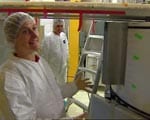Grades improved among elementary and middle school children participating in after-school activities at Boys and Girls Clubs of Greater Dallas
School-age children who participate in structured after-school activities improve their academic achievement, according to a new study from Southern Methodist University, Dallas.
The study by researchers in SMU’s Simmons School of Education and Human Development measured academic performance of students enrolled in Boys and Girls Clubs of Greater Dallas.
“Boys and Girls Clubs of Greater Dallas and other structured programs are really having a positive impact,” said Ken Springer, an associate professor. “We believe that the homework support that the clubs consistently provide students may be a key factor. Now we plan to extend the study and take into account more variables.”
The study looked at data on 719 students in second through eighth grade who participated in after-school activities at one of 12 clubs during the 2009-2010 academic year.
Among elementary and middle-school children who participated frequently in club activities, the researchers saw grades improve from the start of the year to the end of the year. That was especially true for elementary students. The researchers also saw improved school attendance for both age groups.
Among elementary students who participated in a greater variety of activities, the researchers observed that the students’ grade point averages improved, “but only among elementary students, and only when program participation was substantial,” said the authors.
Afterschool care can provide children with sense of success
Afterschool care activities can provide a child with a sense of success, even if that child isn’t necessarily successful in the classroom, said Deborah Diffily, co-author on the study and an associate professor in Simmons.
“For children who live in poverty — often those who attend Boys and Girls Clubs — the clubs can ameliorate the pressures of poverty, such as living in an overcrowded apartment or a lack of after-school snacks,” Diffily said.
The authors reported their findings in “The Relationship Between Intensity and Breadth of After-School Program Participation and Academic Achievement: Evidence from a Short-Term Longitudinal Study,” in the Journal of Community Psychology.
Springer and Diffily both teach within Simmons’ Department of Teaching and Learning.
Study considered how frequently children participated and the volume of activities
About 15 percent of American students participate in some sort of structured, supervised program outside of school, say the authors. Another 30 percent would participate if quality programming were available, they report.
“After-school programs are increasingly viewed as a means of supporting children’s physical, academic, social and behavioral development,” according to Springer and Diffily. Increasingly, federal funding is tied to empirical evidence that proves programs are beneficial.
Within the scientific literature, the psychological and social benefits of programs are well-documented, the authors said. Benefits observed include better social skills, greater motivation, better classroom behavior, higher self-esteem and lower rates of criminal activity.
However, evidence of any academic benefits is mixed. Some studies show benefits for grades or achievement test scores, while others don’t, said the authors. Those discrepancies have been attributed to variations in study methodologies. Rarely have studies considered intensity and breadth, as in the current study.
Boys and Girls Clubs’ unique structure is comprehensive, has history of success
Springer and Diffily looked specifically at children who are members of Boys and Girls Clubs of Greater Dallas, which is part of Boys and Girls Clubs of America, one of the nation’s oldest after-school programs.
A nonprofit organization, Boys and Girls Clubs of America comprises about 4,000 community-based clubs that serve more than 4 million children after school every weekday. Annual membership costs are low and cover daily access, homework support and choice of age-appropriate activities.
Each club’s programs span five areas: Character and Leadership; Education and Career; Health and Life Skills; Arts; and Sports, Fitness and Recreation.
During a daily, designated homework period, staff and volunteers divide the students into groups by age and help them complete their homework.
Methodology tapped BGCGD data logged for each participant
The study relied on absences and students’ grades for English, math and science from the first six weeks and the final six weeks of the school year.
Besides looking at grades and attendance, the researchers also calculated overall GPA and overall school absences.
Springer and Diffily found that the more frequent the participation, the greater the improvement in overall GPA. That correlation was stronger for elementary students, and for grades as opposed to school attendance.
Likewise, the researchers observed a positive correlation between activity and GPA. The more activities attended, the greater the increase in overall GPA among elementary students. Breadth wasn’t associated with improved GPA among middle-schoolers. Also, breadth didn’t impact absences for either age group.
Academic benefits may be the result of club influences or to shielding students from negative influences outside the clubs, or both, said Springer and Diffily.
“Children benefited from the clubs regardless of the extent of participation in any one program,” the authors said, “but the more programs for which they attended the majority of meetings, the greater the benefits. — Margaret Allen
Follow SMU Research on Twitter, @smuresearch.
For more SMU research see www.smuresearch.com.
SMU is a nationally ranked private university in Dallas founded 100 years ago. Today, SMU enrolls nearly 11,000 students who benefit from the academic opportunities and international reach of seven degree-granting schools. For more information, www.smu.edu.
SMU has an uplink facility located on campus for live TV, radio, or online interviews. To speak with an SMU expert or book an SMU guest in the studio, call SMU News & Communications at 214-768-7650.

 New study on kingship and sainthood in Islam offers a striking new historical perspective
New study on kingship and sainthood in Islam offers a striking new historical perspective Texas frontier scientists who uncovered state’s fossil history had role in epic Bone Wars
Texas frontier scientists who uncovered state’s fossil history had role in epic Bone Wars Observed! SMU’s LHC physicists confirm new particle; Higgs ‘God particle’ opens new frontier of exploration
Observed! SMU’s LHC physicists confirm new particle; Higgs ‘God particle’ opens new frontier of exploration DOE Award: advancing SMU’s link to the God particle
DOE Award: advancing SMU’s link to the God particle Ancient tree-ring records from southwest U.S. suggest today’s megafires are truly unusual
Ancient tree-ring records from southwest U.S. suggest today’s megafires are truly unusual Human diabetes has new research tool: Overfed fruit flies that develop insulin resistance
Human diabetes has new research tool: Overfed fruit flies that develop insulin resistance Modeling the human protein in search of cancer treatment: SMU Researcher Q&A
Modeling the human protein in search of cancer treatment: SMU Researcher Q&A Middle school boys who are reluctant readers value reading more after using e-readers
Middle school boys who are reluctant readers value reading more after using e-readers Dark matter search may turn up evidence of WIMPS: SMU Researcher Q&A
Dark matter search may turn up evidence of WIMPS: SMU Researcher Q&A


 Public health insurance provides insured infants better, less costly care than private plans
Public health insurance provides insured infants better, less costly care than private plans